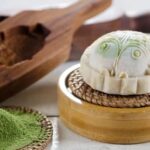Rosemary, an herb known for its aromatic fragrance and versatile uses in culinary arts, has found a new role as a stunning cake decoration. In recent years, there has been a growing trend of incorporating rosemary into cake designs, adding a unique and natural elegance to these sweet treats.
The combination of the cake’s delicate flavors and textures with the vibrant greenery of rosemary creates a visually striking masterpiece that is as pleasing to the eye as it is to the palate.
The use of rosemary as a cake decoration goes beyond its aesthetic appeal. Historically, rosemary has been cherished for its symbolic meaning. Symbolizing love, remembrance, and luck, this herb holds a special place in culinary traditions worldwide. From ancient Greece to modern-day celebrations, rosemary has been used in various rituals and ceremonies. By adorning your cake with rosemary sprigs or leaves, you not only add beauty but also infuse it with centuries-old symbolism.
When it comes to decorating cakes with rosemary, choosing the right base is essential. The flavors and textures of the cake should complement the aromatic qualities of the herb without overpowering them. It is important to consider factors such as density and moistness to ensure that the cake can support the weight of the decoration while maintaining its structural integrity. By selecting the perfect cake base, you create an ideal canvas for showcasing the natural beauty of rosemary.
Intrigued by this unconventional yet captivating trend? Look no further. This article will guide you through exploring and appreciating the unique beauty of cakes decorated with rosemary – from understanding their historical significance to discovering practical tips on arranging the herb onto your creation. Get ready to embark on a journey that elevates your cake decoration skills with nature’s timeless gift: rosemary.
The Natural Elegance of Rosemary, a Perfect Cake Decoration
Rosemary has long been revered for its natural elegance and is now gaining popularity as a unique cake decoration. The use of rosemary in culinary arts dates back centuries, making it a perfect choice for adding a touch of sophistication to your cakes. This section will explore the historical significance of rosemary in cake decoration and delve into the symbolism associated with this versatile herb.
Throughout history, rosemary has been used in various cuisines around the world. In ancient Greece and Rome, it was believed to strengthen memory and was often associated with remembrance, love, and loyalty. In medieval times, brides would wear wreaths made of rosemary as a sign of fidelity and luck. These historical connections have translated into rosemary being a popular choice for adding meaningful symbolism to cakes.
When selecting the perfect cake base for your rosemary decoration, it’s important to choose flavors and textures that complement this aromatic herb. Rosemary pairs well with a range of flavors including lemon, orange, lavender, and almond. Whether you opt for a classic vanilla or chocolate cake or venture into more adventurous combinations such as lemon-rosemary or almond-orange-rosemary, the key is to ensure that the flavors balance harmoniously.
To support the addition of rosemary as a cake decoration, it’s crucial to consider the density and moistness of the cake. Rosemary works particularly well with cakes that have a dense structure or ones that are slightly moist. This ensures that the herb can be incorporated seamlessly without overwhelming the texture of the cake itself.
In summary, rosemary brings not only visual elegance but also deep symbolism when used as a cake decoration. Its rich history in culinary arts and associations with love, remembrance, and luck make it an appealing choice for those looking to elevate their cake designs. Furthermore, carefully choosing complementary flavors and considering texture will ensure that both taste buds and aesthetics are satisfied when incorporating rosemary into your cakes.
| Benefits of using Rosemary as a Cake Decoration |
|---|
| – Adds elegance and sophistication to cake designs |
| – Carries historical significance and symbolism |
| – Complements a variety of flavors |
| – Works well with dense or slightly moist cake textures |
Choosing the Perfect Cake Base for Your Rosemary Decoration
When it comes to decorating a cake with rosemary, selecting the right cake base is essential. The flavors and textures of the cake should complement the aromatic qualities of the rosemary, creating a harmonious and delightful combination. In this section, we will explore tips on choosing the perfect cake base and discuss the importance of considering density and moistness to support your rosemary decoration.
Selecting the Right Cake Flavors and Textures
Firstly, it’s important to consider the flavor profile that will pair well with rosemary. The earthy and slightly pine-like taste of rosemary pairs beautifully with citrus flavors like lemon or orange. The brightness of citrus complements the herby notes of rosemary, creating a refreshing and well-rounded taste.
Texture is another crucial factor to consider when choosing a cake base for your rosemary decoration. Lighter cakes such as chiffon or sponge cakes work well, as their airy texture allows the aroma of the rosemary to shine through without overwhelming other elements. These cakes provide a delicate canvas for your decoration.
Considering Density and Moistness
The density and moistness of your chosen cake are important factors to ensure that your rosemary decoration has proper support. If you plan to use fresh or dried rosemary sprigs directly on top of the cake, it’s necessary to choose a sturdy base that can hold them without collapsing or sinking.
Denser cakes like pound cakes or butter cakes can provide this stability due to their firm structure. They also pair nicely with rosemary as their rich flavors are complemented by its herbal notes. However, be mindful not to use too much rosemary in denser cakes, as they may overpower other flavors.
On the other hand, if you prefer a lighter and more delicate cake base but still want to incorporate rosemary into the decoration, consider using a buttercream or cream cheese frosting. These creamy and slightly tangy frostings can act as a glue to hold the rosemary in place while adding additional moisture and flavor to the overall experience.
By carefully selecting the right cake flavors, textures, density, and moistness, you can create a perfect base that supports your rosemary decoration while enhancing its taste and visual appeal. Experiment with different combinations to find the ideal pairing that suits your preferences and elevates your cake to new levels of deliciousness.
The Art of Arranging Rosemary to Beautify Your Cake
Rosemary is not only a visually appealing cake decoration but also brings a delightful aroma to any cake. Arranging rosemary on your cake requires careful consideration of proportion, balance, and the various forms in which rosemary can be used. Here is a step-by-step guide on how to arrange and incorporate rosemary onto your cake in an appealing way.
- Start with Fresh Rosemary: When using rosemary as a cake decoration, it is crucial to use fresh sprigs that are still fragrant. Choose sprigs with healthy-looking leaves and avoid any wilted or discolored ones.
- Determine Placement: Before arranging the rosemary, envision how you want it to look on your cake. Decide if you want a simple ring around the base of the cake or if you’d like to create elaborate patterns or designs.
- Proportion and Balance: When arranging rosemary on your cake, consider the size and shape of both the individual sprigs and the overall placement. Aim for proportional spacing between each sprig while maintaining a balanced distribution around the cake.
- Incorporate Different Forms of Rosemary: Experiment with different forms of rosemary to create diverse visual effects. Besides using whole sprigs, you can also use individual leaves or ground rosemary sprinkled on top of the frosting for added texture and flavor.
- Use Additional Elements: To enhance the aesthetics of your cake, consider incorporating other ingredients or decorations alongside the rosemary. Edible flowers, citrus zest, or even small fruits can complement the natural beauty of rosemary.
Remember that arranging rosemary onto a cake is an art form that allows for personal creativity and expression. Don’t be afraid to experiment with different techniques and designs to achieve the desired effect. With practice, you’ll become skilled at beautifully incorporating rosemary into your cakes while adding a touch of elegance and fragrance to every slice.
Pairing Flavors
The aromatic and distinctive flavor of rosemary makes it an excellent ingredient to pair with various cake recipes. When incorporated into cakes, rosemary adds a unique depth of flavor that complements both sweet and savory elements. Here are some delicious cake recipes that perfectly go hand in hand with rosemary.
- Lemon Rosemary Cake: This refreshing combination is perfect for those who enjoy a zesty and herbaceous flavor profile. The bright citrus notes of lemon beautifully balance the earthiness of rosemary. The cake can be made with layers of fluffy lemon sponge cake infused with chopped rosemary, and topped with a tangy lemon glaze.
- Chocolate Rosemary Cake: Indulge in the delightful combination of rich chocolate and aromatic rosemary. The earthy undertones of rosemary add complexity to the decadent chocolate flavors, resulting in a truly indulgent treat. This cake can be made by adding finely ground rosemary to the chocolate batter, creating a subtle infusion of flavor throughout each layer.
- Honey Rosemary Cake: Harness the natural sweetness of honey and the herbal fragrance of rosemary in this delectable cake recipe. The floral undertones of honey blend harmoniously with the earthy flavors of rosemary, creating a delicate and balanced taste. This cake can be made by incorporating honey into the batter along with fresh or dried rosemary leaves.
These are just a few examples of how rosemary can elevate the flavors of your cakes. Whether you prefer citrusy combinations, rich chocolate pairings, or delicate floral notes, there is a perfect cake recipe that can incorporate this versatile herb. Experimentation is key when using rosemary, as its intensity varies depending on whether you use fresh sprigs, dried leaves or ground rosemary.
| Cake Recipe | Key Ingredients |
|---|---|
| Lemon Rosemary Cake | Lemon zest, chopped rosemary, lemon glaze |
| Chocolate Rosemary Cake | Dark chocolate, finely ground rosemary |
| Honey Rosemary Cake | Honey, fresh or dried rosemary leaves |
Adding a Touch of Flair
Simple and Elegant Designs
One approach to incorporating rosemary into cake designs is by keeping it simple and elegant. This style allows the natural beauty and fragrance of rosemary to take center stage. For a minimalist look, consider adorning a white or pastel-colored cake with a few sprigs of fresh rosemary placed delicately on top. The slender green branches create an eye-catching contrast against the light-colored backdrop, creating a visually pleasing effect.
Another creative option is to create a wreath-like arrangement with rosemary around the sides of the cake. Carefully trim the sprigs to be uniform in length and secure them to the sides using toothpicks or floral wire. This technique adds an element of sophistication and earthiness to the overall design, perfect for weddings or other formal occasions.
Elaborate and Artistic Designs
For those looking to make a bold statement with their cake decoration, there are numerous ways to incorporate rosemary in more intricate designs. One idea is to create delicate patterns or shapes using roasted rosemary leaves as edible art pieces. Arrange them in geometric patterns or use them to form floral motifs for a stunning visual impact.
To add even more flair, consider combining rosemary with other complementary elements such as edible flowers or citrus zest. These additional ingredients can enhance both the visual appeal and taste of the cake while harmonizing with the aromatic qualities of rosemary.
Personalized Cake Toppers
Another creative way to incorporate rosemary into cake designs is by crafting personalized cake toppers using this fragrant herb. Consider shaping letters or numbers out of wire and threading fresh rosemary sprigs through them to spell out names, initials, or significant dates. This adds a personal touch and makes for a unique keepsake that can be cherished long after the cake has been enjoyed.
Incorporating rosemary into your cake designs not only adds flair and visual interest but also infuses the cake with its delightful aroma. Whether opting for a simple and elegant approach or venturing into more elaborate and artistic designs, rosemary is a versatile and timeless element that can elevate any cake to new heights of beauty and taste.
The Versatility of Rosemary Decoration
Rosemary has become a popular choice for cake decoration due to its versatility and ability to complement various occasions. Whether you are celebrating a wedding, birthday, or festive event, incorporating rosemary into your cake design can add an elegant and unique touch. The versatility of rosemary as a cake decoration allows for endless possibilities and creative designs that suit any occasion.
For weddings, rosemary offers a timeless and romantic feel. Its delicate sprigs can be artfully arranged on a naked cake, creating a natural and organic look that is both rustic and sophisticated. Rosemary pairs beautifully with floral flavors like lavender or lemon, enhancing the celebratory atmosphere of the wedding.
Birthdays call for cakes that are vibrant and full of flavor. Consider pairing rosemary with citrus flavors like orange or grapefruit for a zesty twist. You can also sprinkle ground rosemary onto buttercream frosting to add an aromatic punch to classic vanilla or chocolate cakes.
During festive celebrations like Christmas or Thanksgiving, rosemary adds a touch of warmth and earthiness. Consider incorporating it into spiced cakes infused with cinnamon and nutmeg for a cozy holiday treat. Alternatively, use rosemary in combination with cranberries or pomegranate for a festive burst of flavor and color.
No matter the occasion, adding rosemary to your cake brings not only visual appeal but also aromatic delight. As guests indulge in the delicious creation, they will be met with the inviting scent of this herb. The therapeutic properties of rosemary can elevate the enjoyment of the cake by reducing stress and promoting relaxation.
Incorporating rosemary into your cake design allows you to personalize each creation while adding elegance and depth to the overall aesthetic. Experimenting with different combinations of flavors, textures, and decorations will help you create unique cakes that are perfectly suited for every occasion. Let your creativity flow as you explore the versatile beauty of rosemary as a cake decoration.
The Scented Experience
Rosemary is not just a visually appealing cake decoration, but it also enhances the sensory experience with its delightful aroma and therapeutic benefits. Aromatherapy has gained popularity in recent years for its ability to promote relaxation, reduce stress, and improve mental clarity. Including rosemary as a cake decoration allows you to enjoy these benefits while indulging in a delicious treat.
One of the main reasons why rosemary is widely used in aromatherapy is due to its refreshing and invigorating scent. The aroma of rosemary has been known to stimulate the mind, increase concentration, and boost memory. Imagine enjoying a slice of cake that not only tastes heavenly but also helps you feel more focused and alert.
To fully experience the aromatherapy benefits of rosemary on your cake, it’s important to choose high-quality fresh rosemary sprigs or leaves. Ensure that the rosemary is organic and free from any chemicals or pesticides that could interfere with its therapeutic properties. Gently wash the rosemary before using it as a decoration on your cake to make sure it is clean and ready for use.
When arranging the rosemary on your cake, be mindful of how close it is to the edge or any fillings or frostings that may come into contact with it. You want to avoid any direct contact between the rosemary and potential allergens or substances that could affect its natural fragrance. Placing the rosemary sprigs strategically on top of your cake can help release their aroma without compromising food safety.
Conclusion
In conclusion, using rosemary as a cake decoration is a wonderful way to elevate the beauty of your creations. The unique visual appeal and aromatic qualities that rosemary brings to a cake cannot be matched by any other ingredient.
Throughout history, rosemary has been revered for its natural elegance and has been used in culinary arts, specifically in cake decoration. Not only does it add a touch of class and sophistication to your cakes, but it also carries symbolic meanings of love, remembrance, and luck.
When choosing the perfect cake base for your rosemary decoration, it is important to consider flavors and textures that complement the herb. Lighter flavors like lemon or vanilla work well with the subtle earthiness of rosemary, while denser cakes like chocolate or almond can stand up to its more assertive flavor profile. Additionally, considering the density and moistness of the cake is crucial to ensure that it can support the weight of the decoration without collapsing.
Arranging rosemary onto your cake requires some skill and artistry. A step-by-step guide can help you create appealing designs that incorporate proportion and balance. Whether using rosemary sprigs, leaves, or ground rosemary for different effects, each element adds depth and character to your creation. Furthermore, exploring different flavor combinations with rosemary can lead to truly exceptional cakes. From citrus-infused cakes to decadent chocolate delights, incorporating this versatile herb adds an unexpected twist that elevates the taste.
The benefits of using rosemary as a cake decoration extend beyond its aesthetic appeal and flavor enhancement. The therapeutic properties of rosemary infuse each bite with an additional sensory experience. Its ability to reduce stress and improve focus creates a sense of relaxation and enjoyment while savoring the cake. So why not experiment with this timeless beauty? Let your creativity run wild and create unique cake designs using rosemary as your star ingredient – you won’t be disappointed.
Frequently Asked Questions
How do you decorate food with rosemary?
Rosemary is a versatile herb that can be used in various ways to decorate food. One common method is to use whole sprigs of rosemary as a garnish on savory dishes, such as roasted meats or grilled vegetables. The vibrant green color and needle-like leaves of rosemary add visual appeal and a touch of earthiness to the presentation.
Another way to decorate food with rosemary is by finely chopping or mincing the leaves and sprinkling them over dishes like pasta, soups, or salads. This not only enhances the appearance but also infuses the dish with the aromatic flavor that rosemary possesses.
What herbs to use when garnishing cake?
When it comes to garnishing cakes, there are a few herbs commonly used for both visual appeal and complementary flavors. One popular choice is fresh mint leaves, which add a bright pop of green color along with a refreshing taste that pairs well with many cake flavors.
Edible flowers like lavender blossoms or pansies can also make elegant decorations for cakes, while herbs like lemon balm or lemon verbena can provide subtle citrus notes that work particularly well with lemon or citrus-flavored cakes. Ultimately, the choice of herbs for garnishing cakes depends on personal preference and how it complements the overall taste profile.
What leaves for garnishing dessert?
Garnishing desserts requires careful consideration of not just appearance but also flavors that enhance the sweet treats without overwhelming them. Some common leaves used for garnishing desserts include mint leaves, which provide a burst of freshness that pairs nicely with fruity or chocolate-based desserts. Microgreens like micro basil or micro cilantro add delicate touches of flavor and texture to plated desserts without overpowering other components.
Additionally, edible flower petals such as rose petals or violets can bring an enchanting touch to dessert presentations while imparting subtle floral notes that complement certain dessert flavors like vanilla or berry-infused desserts. The key in leaf garnishes for desserts is striking a balance between visual appeal and taste compatibility so that the overall dessert experience is enhanced.

Welcome to our cake decorating blog! My name is Destiny Flores, and I am the proud owner of a cake decorating business named Cake Karma. Our mission is to provide delicious, beautiful cakes for all occasions. We specialize in creating custom cakes that are tailored specifically to each customer’s individual needs and tastes.





